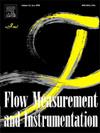流体与结构相互作用对气体比例阀流场和振动特性的影响分析
IF 2.3
3区 工程技术
Q2 ENGINEERING, MECHANICAL
引用次数: 0
摘要
燃气比例阀(GPV)用作全预混低氮冷凝锅炉的燃气调节器,其压力调节和流量输出能力由阀芯状况决定。为了研究 GPV 阀芯在工程应用中的可靠性,本文建立了流场和固态场的三维模型,采用双向流固耦合计算方法分析了流场特性和阀芯的稳定性。结果表明,随着阀芯的打开,上隔膜两侧逐渐形成涡流结构,阀芯的振动强度随着涡流的形成逐渐增大。阀芯在流出方向的振动强度最大,上隔膜在-0.05 毫米和 0.03 毫米之间摆动。当阀芯第一次打开到最大高度时,会出现 0.2 毫米的冲击回弹,然后逐渐稳定在 8 毫米的最大打开位置。最大应力总是出现在阀杆与膜片的连接处,尤其是在初始开启阶段,应力达到 5.17 兆帕,但仍未超过 30 兆帕的允许极限。这项研究还比较了流场激励与阀芯固有频率,确定了潜在的阀芯共振。这项工作为气动 GPV 的流场特性和阀芯安全预测提供了宝贵的指导。本文章由计算机程序翻译,如有差异,请以英文原文为准。
Fluid-structure interaction analysis on flow field and vibration characteristics of gas proportional valve
Gas proportional valve (GPV) is used as the gas regulator for fully premixed low nitrogen condensing boiler, with the pressure regulation and flow output capacity determined by the condition of the valve core. To investigate the reliability of GPV valve core in engineering applications, this paper establishes three-dimensional models of the flow and solid fields, employing a coupled calculation method known as the two-way fluid-structure interaction method to analyze the characteristics of the flow field and the stability of the valve core. The results indicate that with the valve core opening, the vortex structures gradually form on both sides of the upper diaphragm, and the vibration strength of the valve core gradually increases with the formations of the vortices. The valve core vibrates the most strongly in the outflow direction, and the upper diaphragm oscillates between −0.05 mm and 0.03 mm. When the valve core is first opened to its maximum height, there will be a 0.2 mm impact rebound, and then gradually stabilize at the maximum opening position of 8 mm. Maximum stress always occurs at the stem to diaphragms connections, especially in the initial opening stage, where the stress reaching 5.17 MPa but remaining within the allowable limit of 30 MPa. This study also compares the flow field excitation with the valve core's natural frequency, identifying potential valve core resonance. This work provides valuable guidance for the flow field characteristics and valve core safety prediction of pneumatic GPVs.
求助全文
通过发布文献求助,成功后即可免费获取论文全文。
去求助
来源期刊

Flow Measurement and Instrumentation
工程技术-工程:机械
CiteScore
4.30
自引率
13.60%
发文量
123
审稿时长
6 months
期刊介绍:
Flow Measurement and Instrumentation is dedicated to disseminating the latest research results on all aspects of flow measurement, in both closed conduits and open channels. The design of flow measurement systems involves a wide variety of multidisciplinary activities including modelling the flow sensor, the fluid flow and the sensor/fluid interactions through the use of computation techniques; the development of advanced transducer systems and their associated signal processing and the laboratory and field assessment of the overall system under ideal and disturbed conditions.
FMI is the essential forum for critical information exchange, and contributions are particularly encouraged in the following areas of interest:
Modelling: the application of mathematical and computational modelling to the interaction of fluid dynamics with flowmeters, including flowmeter behaviour, improved flowmeter design and installation problems. Application of CAD/CAE techniques to flowmeter modelling are eligible.
Design and development: the detailed design of the flowmeter head and/or signal processing aspects of novel flowmeters. Emphasis is given to papers identifying new sensor configurations, multisensor flow measurement systems, non-intrusive flow metering techniques and the application of microelectronic techniques in smart or intelligent systems.
Calibration techniques: including descriptions of new or existing calibration facilities and techniques, calibration data from different flowmeter types, and calibration intercomparison data from different laboratories.
Installation effect data: dealing with the effects of non-ideal flow conditions on flowmeters. Papers combining a theoretical understanding of flowmeter behaviour with experimental work are particularly welcome.
 求助内容:
求助内容: 应助结果提醒方式:
应助结果提醒方式:


